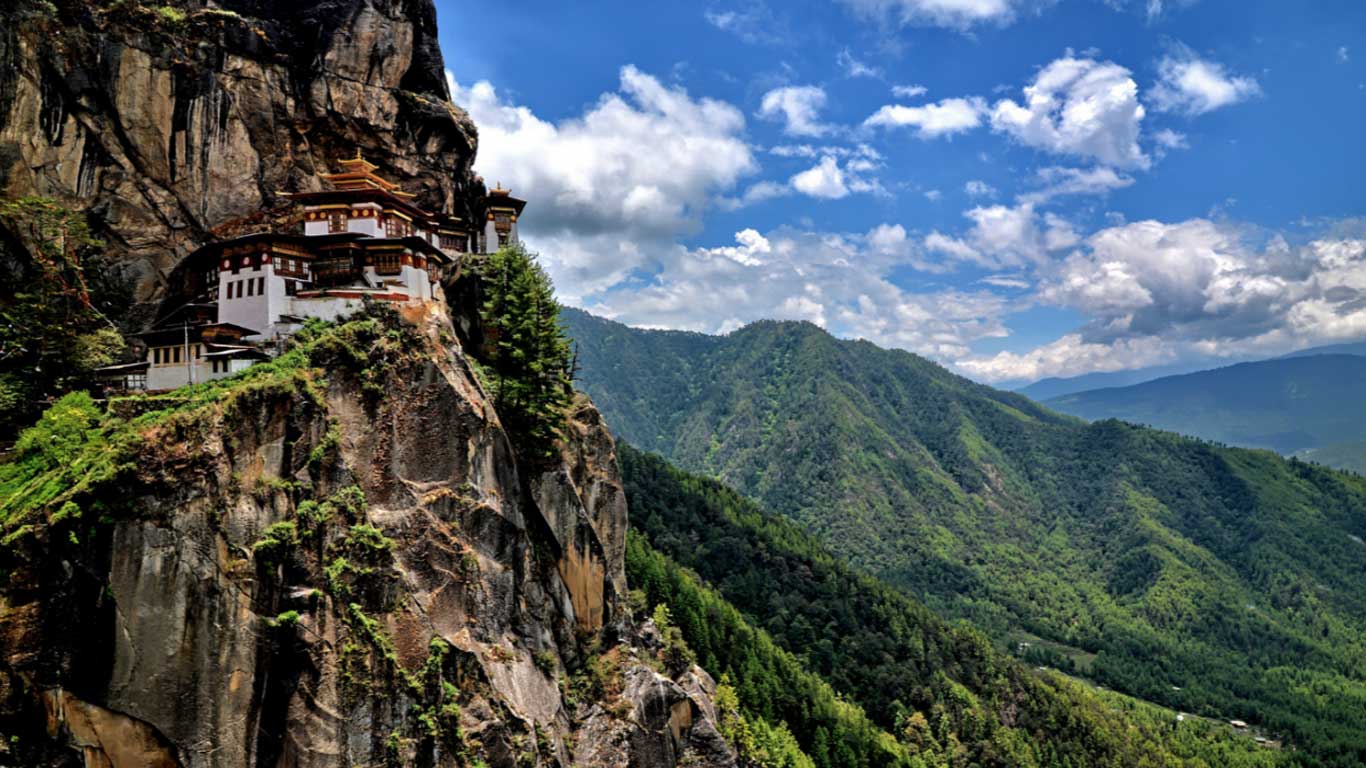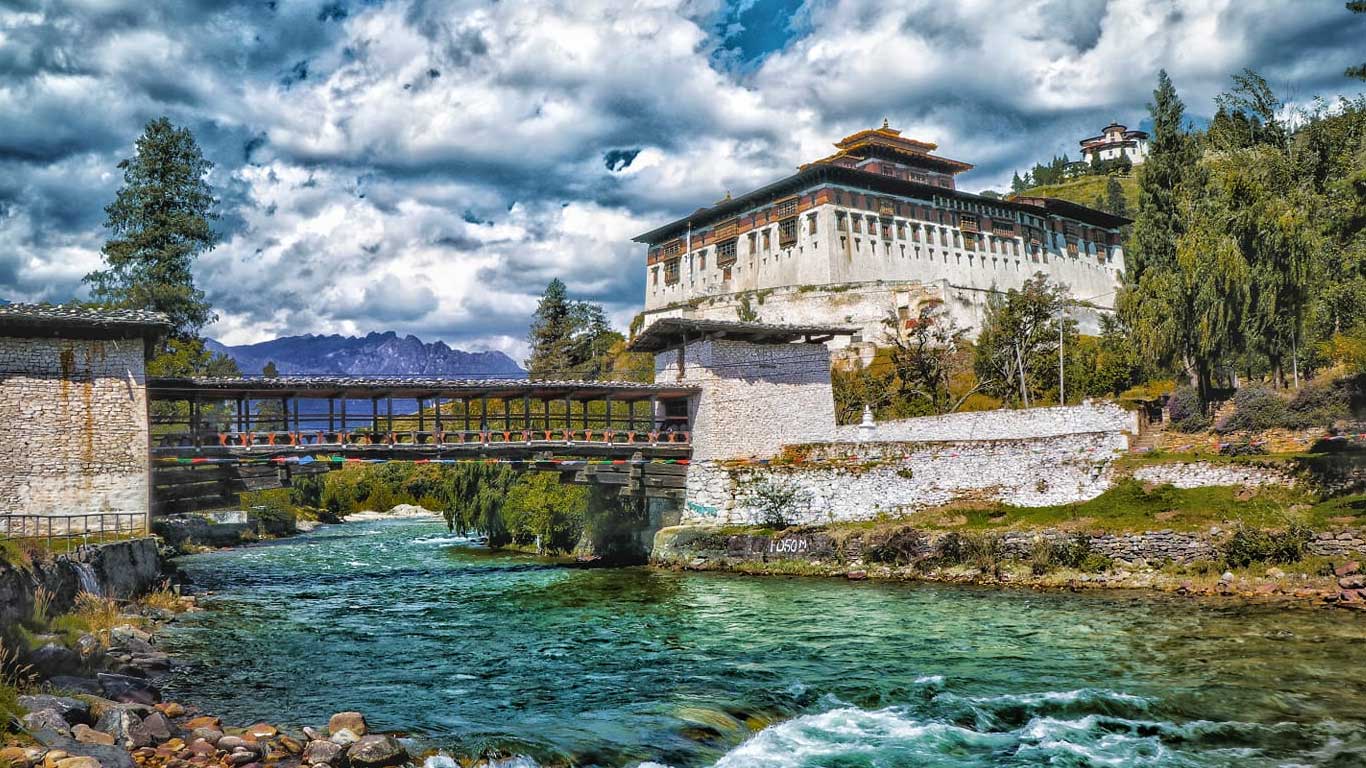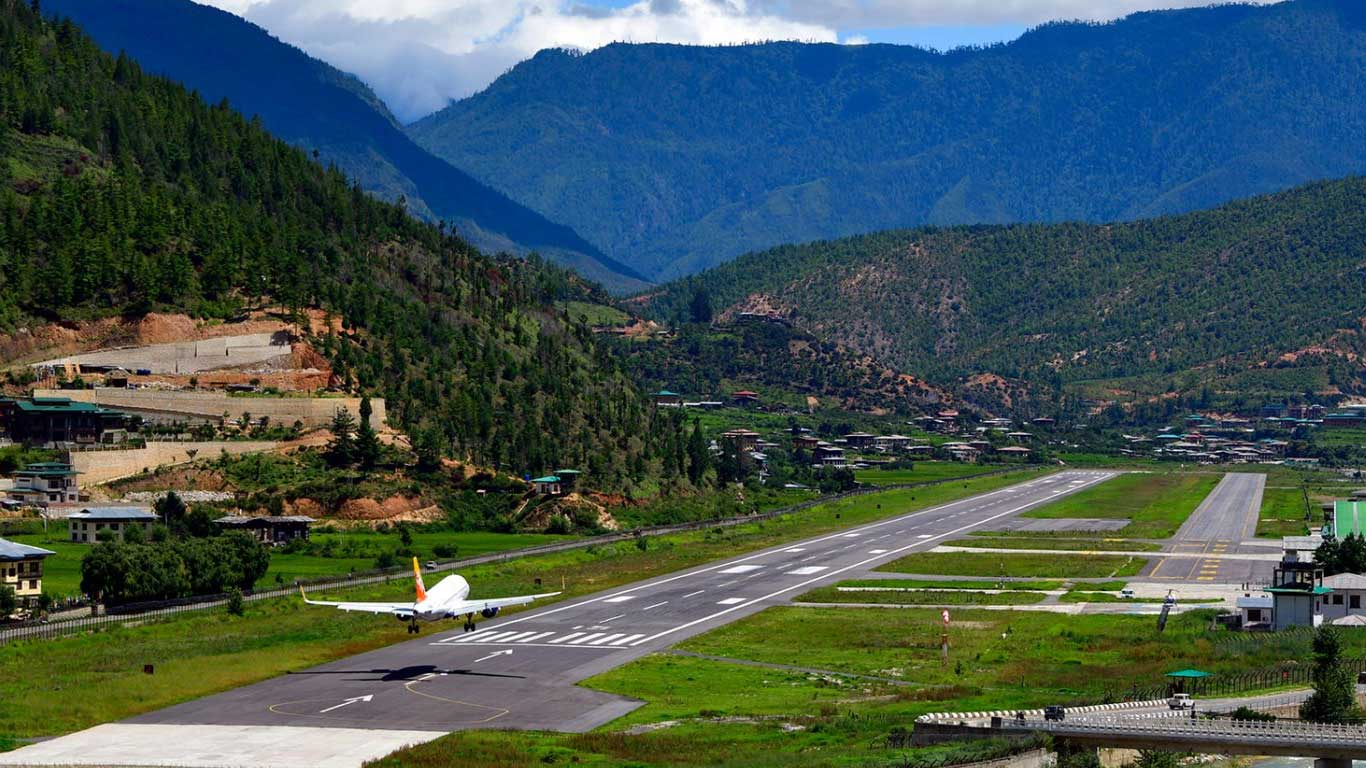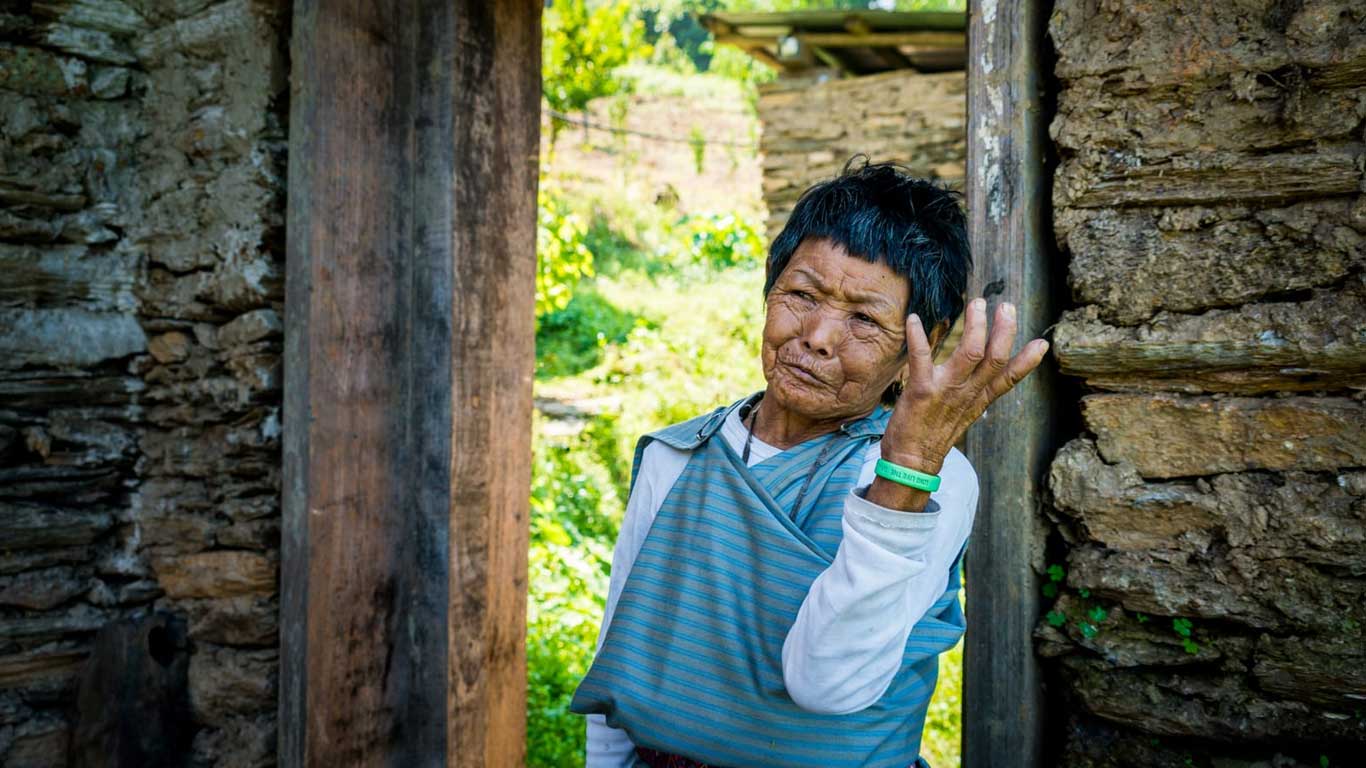Paro
Paro is the location of the only international airport in Bhutan. It is also arguably the second most important city of Bhutan after Thimphu, in terms of tourism significance. Situated in the beautiful Paro valley which is also historically rich apart from its raw beauty.
The Paro valley is one of the largest valleys in Bhutan filled with paddy fields and houses. This place is a true gem for nature lovers. The Paro Chu River flows through the valley adding to its beauty. The famous Tiger’s Nest (Taktsang Monastery) is also situated close to Paro town.
Getting There
Anyone flying into Bhutan by default would be reaching Paro, as this is where the only international airport is located. The airport is connected with India, Nepal, Bangladesh and Thailand and through these countries to the rest of the world.
Bhutan is a country that does not have any railway network. The nearest rail station is at Hasimara on the Indian side about 6 hours drive away. Hasimara is a relatively smaller station, the major station nearby is Alipurduar of New Jalpaiguri. By road Paro is connected with Phuentsholing Phuentsholing (150 km 4.5 hour).
The Tiger’s Nest
This monastery is one of the well known Buddhist sites in Bhutan which is located in the upper cliff (900 metres) of the Paro valley. It was established in the year 1692. People say that Guru Padmasambhava, who introduced Buddhism to Bhutan, meditated here for years. One will have to trek around 4.5 kilometres one way to reach here.
Ringpung Dzong
This Buddhist monastery and fortress were established in the year 1645. This place is the home of government officials of Paro district. The artwork of this fortress draws a picture of Buddha’s life. One can get the magnificent view of Paro valley and the Paro chu river from this place. The annual festival Paro Tshechu also takes place here.
National Museum of Bhutan
Established in the year 1968 above Ringpung Dzong, this cultural museum is full of artwork which includes the culture and heritage of Bhutan along with paintings. This is the right place to gain information about the history of Bhutan.
Drukgyel Dzong
This fortress was built in the year 1649 as a symbol of victory of Bhutan over Tibet. It is about 12 kilometres from the city. It was somehow destroyed by fire in the year 1951 but never fails to attract tourists.
Dungtse Lhakhang
This temple is located in Paro valley, near the National Museum and was built in the year 1421. This three storeys chorten resembles hell, earth and heaven.
Chelela Pass
It is a motorable point located between Paro and Haa valley having an altitude of 13083 feet above sea level. It is famous for a mesmerizing view of the Himalayas.
Tachog Lhakhang Bridge
This iron chained bridge is the oldest bridge built In Bhutan by Thangtong Gyalpo. The bridge is over 600 years old and built over the Paro Chu River.
Paro Weekend Market
Tourists can surely visit this place to avail different kinds of organic fruits and vegetables along with Bhutanese stamps, antiques and masks.
Local People and Culture
The people of Paro district are known as Parops and Buddhism is their main religion. Like the rest of Bhutan, people here maintain and guard their tradition and culture. The traditional formal male dress (Gho) and female dress (Kira) is worn by every male and female especially during all official work.
The Paro valley is famous for the cultivation of red rice, apples and peaches. A preparation made by chilli pepper and cheese known as Ema datshi is regarded as the national dish. Agriculture is the major source of income among the people over here.
Paro Tsechu is the biggest annual festival held here where one can witness the culture of this place which includes dances, music, drama, masks and colourful dress worn by local people and monks.




